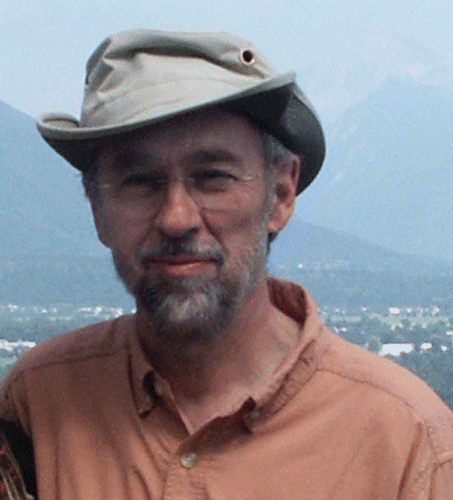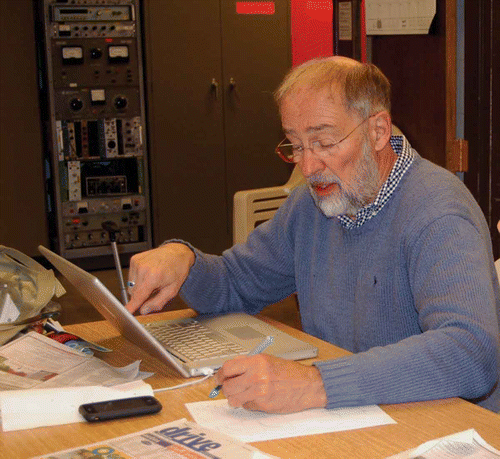The Frontiers of Soft Matter Symposium, organised in honour of Professor Noel A. Clark on the occasion of his seventieth birthday, was held in Boulder, Colorado, in May 2012.
The reports in this special issue of Liquid Crystals, which Noel edited for many years, reflect some of the science discussed at that meeting. Few scientists in the field of soft condensed matter have had greater impact than Noel, who has made many seminal contributions to the field, most notably in his foundational, highly influential research on ferroelectric liquid crystals. His work has had broad fundamental and practical impact, ranging from the development of new ways of understanding order in condensed matter to new display technologies that are important in the commercial marketplace. The importance of his work in advancing fundamental physics has been recognised by his peers throughout his career. Recent recognition includes his co-receipt of the American Physical Society’s 2006 Oliver E. Buckley Prize in condensed matter physics and his election to the US National Academy of Sciences in 2007. Noel was also awarded the Frederiksz Medal of the Russian Liquid Crystal Society in 2008 and the George W. Gray Medal of the British Liquid Crystal Society in 2012.
Within the field of liquid crystal science, Noel is a true pioneer and leader, and it is difficult to find an area of liquid crystals that he has not touched in a fundamental way. Noel co-developed the technique of creating free-standing liquid crystal films, which have proven to be exceedingly valuable systems for exploring and understanding orientational ordering, phase transitions and fluid physics in two dimensions and for elucidating smectic liquid crystal structure. Noel also participated in definitive X-ray structural studies of lyotropic lamellar phases formed from periodic stacks of lipid bilayers, the basis of a broad array of modern studies with biological applications. These experiments provided the first quantitative measurements of the predicted steric repulsion of soft, fluctuating lamellae and led to the discovery of a new tilted hexatic phase.
Noel’s work has played an important role in the information display revolution; he has been involved in three startup companies that have commercialised ferroelectric liquid crystal microdisplays, which have been mass-produced for a variety of applications. Noel’s other achievements include the creation of switchable photonic crystals composed of silica opals infused with liquid crystal, the elucidation of the complex and fascinating chevron defect structure in surface-stabilised ferroelectric liquid crystal cells, understanding the behaviour of smectic liquid crystals confined in silica aerogels, explaining the mechanism of analogue switching in ferroelectric liquid crystals and the electro-optics of the ‘de Vries’ phase, and the recent discovery of lyotropic liquid crystal phases produced by short oligonucleotides, connecting liquid crystals with the origins of life.
Noel’s contributions to the understanding of liquid crystal materials are distinguished by a combination of experimental talent with exceptional theoretical ability. Through the ingenious application of complementary tools such as X-ray and light scattering, optical microscopy and freeze-fracture electron microscopy, Noel and his group continue to lead the world in elucidating novel varieties of liquid crystal order. This has been spectacularly demonstrated over the last decade by the deciphering of the structure of exotic phases in banana-shaped liquid crystals, the first fluids shown to spontaneously break reflection symmetry. It is difficult to find a paper of Noel’s in which the basic theory behind his experiment has not been clearly explained at a level comparable to the best theoretical work in the field.
Noel has also made significant contributions to the rich and important subject of colloidal science. He was the first to make large, perfect, spontaneously ordered colloidal crystals with well-defined photonic band gaps in the Bragg reflection of visible light. Noel’s structural rheology experiments, measuring colloidal structure under shear, pioneered a technique that has become routine in the study of complex fluids. In the mid-1980s, Noel co-discovered ‘laser-induced freezing’, in which a periodic optical potential created by interfering laser beams induces order in two-dimensional colloids. This work anticipated the widespread current use of laser tweezers to manipulate soft and biological matter, and the use of optical fields to assemble colloidal photonic band gap materials. Noel was also one of the first to recognise that self-assembled soft lattices, such as the naturally occurring S-layer of a bacterium, could be used as templates to create metallic and other structures with periodicities at the nanometre scale, helping to found the field of soft nanoscience.
Noel’s personal discoveries are not the only way he has influenced the field. He has also been a generous and widely respected mentor, unselfishly sharing his advice and insights with generations of his own students and post-docs and with his colleagues in soft matter, both at the University of Colorado and elsewhere. A hallmark of Noel’s research is his remarkable ability to solve scientific puzzles by synthesising and explaining seemingly disconnected results from his scientific collaborators, and his list of associates in the successful pursuit of scientific knowledge and understanding over the years is long and varied. Those who have had the good fortune to work with Noel have had the opportunity to appreciate his love for science, his delight in working with others, his openness and sense of scientific adventure, his incredible intuition and his striking ability to explain the most complex concepts in simple terms. The speakers and attendees who took part in the Frontiers of Soft Matter Symposium, who included a broad cross section of Noel’s mentees and luminaries in the field of soft matter physics from across the world, are a testament to Noel’s wide-ranging interests and to his enduring and important contributions.
Dave Walba
Joe Maclennan
Matt Glaser
Boulder, 2013

